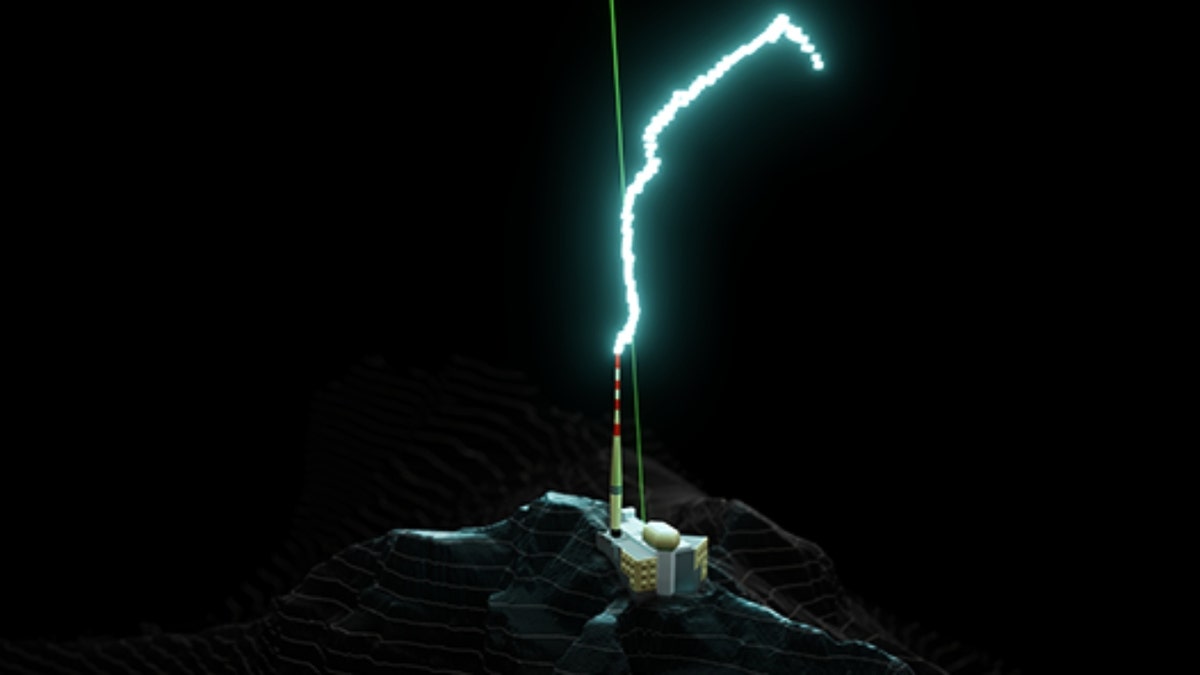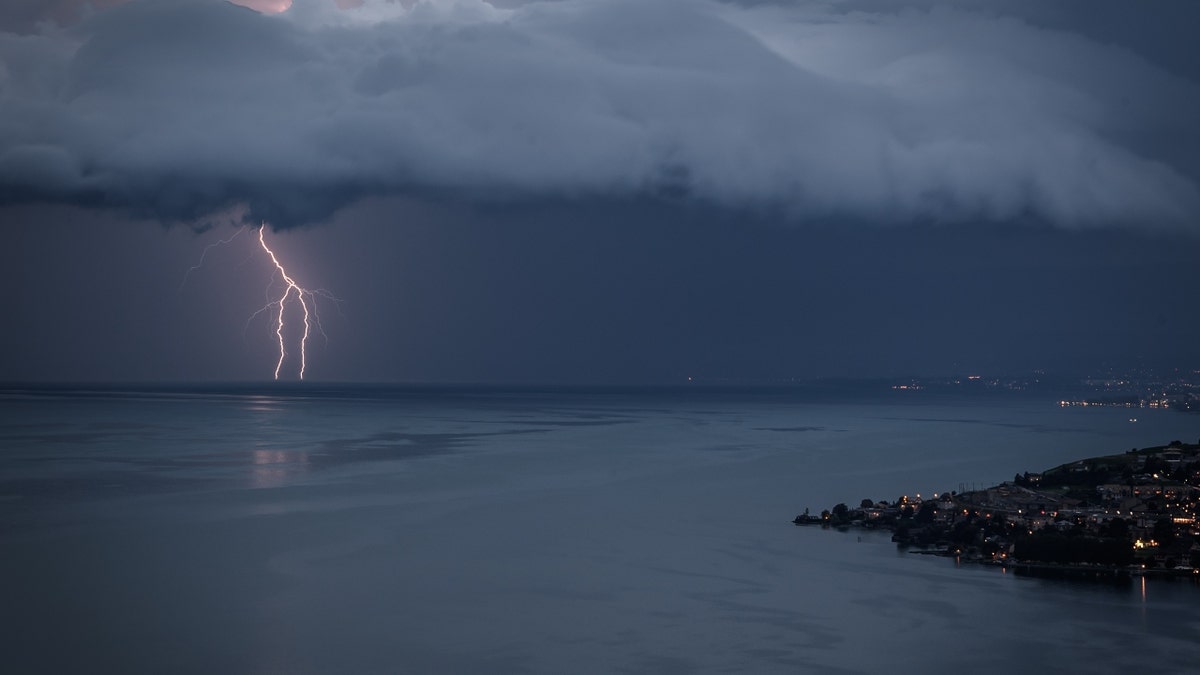Stunning lightning strike in Louisiana caught on camera
The St. John Parish Sheriff's Office has released a video showing a lightning strike this week in LaPlace, Louisiana. (Credit: St. John Parish Sheriff's Office/WEATHER TRAKER/TMX)
A group of scientists said they were able to guide lightning bolts using laser technology for the first time.
In new work published in the journal Nature Photonics, international researchers said Monday that laster-induced filaments, formed in the sky using short and intense laser pulses, can guide lightning discharges across "considerable distances."
The authors said that they believe their experiment would lead to progress in lightning protection and lightning physics.
The demonstration was conducted on Säntis mountain in Switzerland during the summer of 2021.
NASA'S HUBBLE SPACE TELESCOPE RECORDS BLACK HOLE CONTORTING STAR INTO DONUT SHAPE
Using a high-repetition-rate terawatt laser, the equipment was set up next to a telecommunication tower that is one of Europe's structures most affected by lightning.

In tests conducted on the summit of the Säntis, the scientists found that the discharge could follow the laser beam for several dozen metres before reaching the tower of the operator Swisscom. (Univ Geneva by X. Ravinet)
The laser was activated every time storm activity was forecast between June and September and the area had to be closed to air traffic in advance.
Intense laser pulses, at 1,000 times per second, were fired at thunderclouds to redirect lightning strikes.
The tower was hit by at least 16 lightning flashes, four of which occurred during laser activity. All four strikes were intercepted.
"The guiding of an upward negative lightning leader over a distance of 50 meters was recorded by two separate high-speed cameras. The guiding of negative lightning leaders by laser filaments was corroborated in three other instances by very-high-frequency interferometric measurements, and the number of X-ray bursts detected during guided lightning events greatly increased," the scientists said.
The device is the size of a large car, weighing more than three tons.
CALIFORNIA MUDSLIDES FORCE EVACUATIONS IN BERKELEY HILLS NEIGHBORHOOD, WARNINGS AT UC CAMPUS

Winter landscape at the foot of the Santis, Canton of Appenzell Innerrhoden, Switzerland. (DEA / ALBERT CEOLAN / Contributor via Getty Images)
It uses lasers from the German manufacturing company Trumpf Group.
With the University of Geneva scientists also playing a key role, the experiments were conducted in collaboration with aerospace company ArianeGroup.
This concept, which was first proposed in the 1970s, has worked in laboratory conditions, but not in the field until now.
The university said in a release that it took nearly a year to analyze the data that was collected, resulting in the determination that the laser could guide lightning effectively.

Lightning illuminates Lake Geneva next to the village of Cully during a storm seen from Chexbres, western Switzerland, on August 16, 2020. ((Photo by FABRICE COFFRINI/AFP via Getty Images))
"The data analysis also demonstrates that the [Lightning Laser Rod (LLR)], unlike other lasers, works even in difficult weather conditions – such as fog (often found at the summit of Säntis), which can stop the beam – since it literally pierces the clouds," the university said.
The next step is to increase the height of the laser's action even further, with the long-term objective to use the LLR to extend a 10-meter lightning rod by 500 meters.
CLICK HERE TO GET THE FOX NEWS APP
"This work paves the way for new atmospheric applications of ultrashort lasers and represents an important step forward in the development of a laser-based lightning protection for airports, launchpads or large infrastructures," the authors added.
Reuters contributed to this report.






















